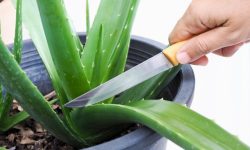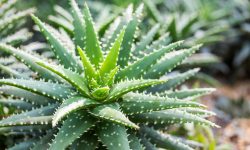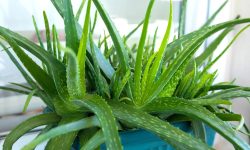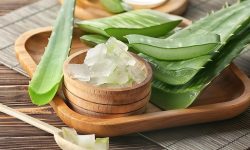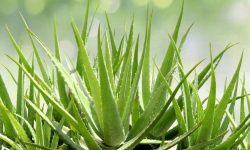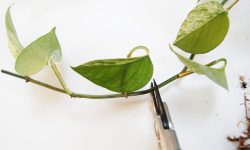Bougainvillea is a breathtakingly colorful climbing plant, renowned for transforming gardens, patios, and outdoor spaces into vibrant, lively displays. Its striking bracts, which surround small true flowers, offer brilliant shades of pink, purple, red, orange, and white, instantly enhancing any landscape. Easy to grow yet highly versatile, bougainvillea thrives in both containers and garden beds, making it suitable for small balconies or expansive garden areas.
With proper sunlight, watering, fertilization, and pruning, gardeners can enjoy continuous blooms and robust growth throughout the year. Understanding its care requirements ensures that bougainvillea flourishes, creating a stunning focal point that draws admiration and adds lasting charm to outdoor spaces in every season.
Understanding Bougainvillea
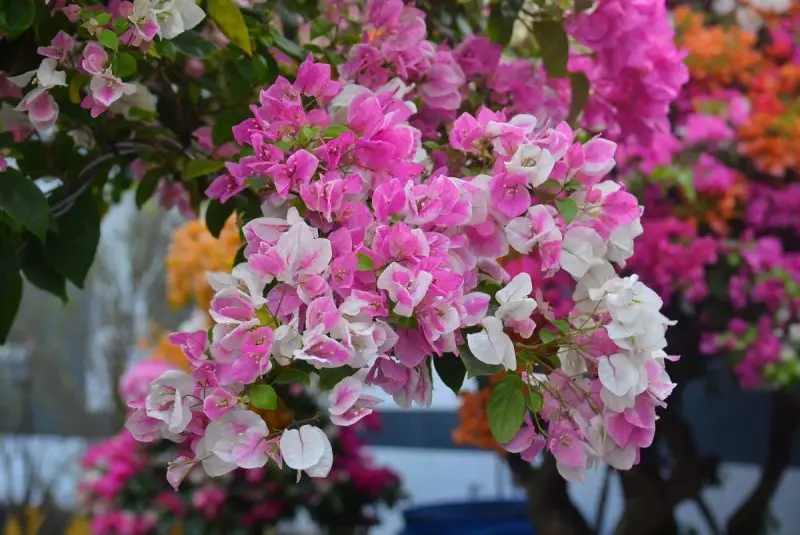
Bougainvillea is a vibrant climbing plant admired for its brilliant colors and adaptability in gardens and landscapes worldwide. Interestingly, what most people perceive as flowers are actually colorful bracts surrounding small, inconspicuous true flowers. The plant can adapt to a variety of soils but grows best in well-draining, nutrient-rich soil. Bougainvillea thrives with at least 5–6 hours of direct sunlight each day, which promotes abundant flowering and vibrant foliage. While it is drought-tolerant, regular and balanced watering supports stronger growth and overall plant health. Its versatile growth habit allows it to be trained in pots, on trellises, or along walls, making it a highly decorative choice for any garden setting.
Bougainvillea can flower almost year-round in warm climates, though peak blooming usually occurs during spring and summer. Proper care, including regular pruning and the application of balanced fertilizer, ensures long-lasting blooms and maintains its striking appearance. Gardeners can select from numerous varieties offering colors such as pink, purple, orange, red, and white, allowing for creative combinations to complement different garden designs. The plant’s robust growth and vivid color make it a popular option for adding energy and visual interest to both private and public landscapes.
One important consideration is that bougainvillea branches often carry sharp thorns, so protective gloves are recommended when handling or pruning the plant. Understanding its light, water, and nutrient requirements is key to maximizing its natural beauty. By learning how to care for bougainvillea properly, gardeners can ensure healthy growth, continuous flowering, and a stunning focal point in their garden. This knowledge allows bougainvillea to flourish, turning any outdoor space into a lively and colorful showcase that draws attention and admiration.
Sunlight Requirements
Bougainvillea thrives best under full sunlight, which is essential for promoting vibrant blooms and healthy growth. Ideally, the plant should receive at least 5–6 hours of direct sunlight each day. Without adequate light, bougainvillea may produce fewer flowers, and the leaves can appear pale or sparse. Sunlight plays a crucial role in photosynthesis, helping the plant convert energy from light into the nutrients it needs to sustain strong stems and vibrant bracts. Gardeners should position bougainvillea in a spot where it receives consistent sunlight, such as along a south-facing wall or an open trellis.
While bougainvillea can tolerate partial shade, prolonged exposure to low-light conditions can lead to weaker growth and reduced flowering. In shaded areas, the plant may become leggy, with long stems stretching toward the light source. For potted bougainvillea, it’s important to rotate the container periodically to ensure even exposure and balanced growth. Additionally, in regions with extremely intense sunlight, providing some filtered shade during the hottest part of the day can prevent leaf scorching while still supporting strong flowering.
Sunlight requirements also influence seasonal care practices. During the spring and summer, when bougainvillea experiences its peak growth and flowering period, maximizing sun exposure is key to achieving the most colorful display. In cooler or cloudier months, the plant may slow down its growth, but maintaining as much light as possible will help preserve its energy reserves. Understanding and meeting bougainvillea’s sunlight needs ensures a healthy, vigorous plant with continuous flowering, enhancing its ornamental value in gardens, patios, and outdoor spaces.
Soil Conditions
Bougainvillea thrives in well-draining soil with moderate fertility. Heavy clay or waterlogged soils hinder growth and promote root diseases. Sandy or loamy soils enriched with organic matter are ideal, providing both nutrients and adequate drainage for healthy roots.
Amending soil with compost or aged manure improves texture and nutrient availability. A balanced soil pH between 5.5 and 6.5 supports nutrient uptake, ensuring vibrant blooms and strong foliage. Gardeners should test soil periodically to maintain optimal conditions.
Proper soil maintenance includes loosening compacted areas and avoiding excessive watering. Regular checks for soil moisture prevent overwatering and root rot. Healthy, well-drained soil is essential for continuous flowering, robust stems, and long-lasting plant vitality.
Watering Needs
Bougainvillea is a drought-tolerant plant, but proper watering is essential to promote healthy growth and vibrant blooms. While it can survive periods of dry conditions, consistent watering encourages strong root development and fuller foliage. The key is to water deeply but infrequently, allowing the soil to dry out slightly between watering sessions. Overwatering can lead to root rot and reduce flowering, while underwatering may cause leaf drop and slowed growth.
For potted bougainvillea, monitoring soil moisture is particularly important. Containers tend to dry out faster than garden beds, so checking the top few inches of soil regularly helps determine when watering is necessary. A good practice is to water thoroughly until water drains from the bottom of the pot, ensuring that roots receive sufficient moisture without sitting in excess water. In garden beds, mulching around the base can help retain moisture while preventing soil from drying too quickly, creating an optimal environment for healthy growth.
Watering needs also vary with seasonal changes and climate conditions. During the active growing season in spring and summer, bougainvillea may require more frequent watering to support flowering and new growth. In cooler or dormant months, reduce watering to prevent waterlogged soil and encourage natural rest cycles. Understanding and adjusting to these needs ensures that bougainvillea remains healthy, strong, and full of vibrant bracts year after year, making it a striking and resilient addition to any garden or landscape.
Fertilizer and Nutrients
Choosing the Right Fertilizer
Bougainvillea requires a balanced fertilization plan to promote strong growth and vibrant blooms. Using a fertilizer high in phosphorus can encourage flower production, while a balanced NPK (Nitrogen-Phosphorus-Potassium) fertilizer supports overall plant health. Slow-release granular fertilizers are ideal for garden planting, providing a steady supply of nutrients over several weeks, whereas liquid fertilizers can be applied more frequently to potted plants for quick results. Avoid fertilizers high in nitrogen alone, as they may stimulate excessive leaf growth at the expense of flowering.
Applying fertilizer at the correct time is equally important. During the active growing and blooming seasons, typically spring through summer, frequent fertilization can boost flower production and maintain lush foliage. For container plants, liquid feeding every two to three weeks can be highly effective. Always follow the recommended dosage instructions to prevent nutrient burn. Understanding the plant’s nutrient requirements and choosing the right type of fertilizer ensures bougainvillea remains healthy, strong, and consistently colorful throughout the growing season.
Supplementing with Micronutrients
In addition to primary macronutrients, bougainvillea benefits from micronutrients such as magnesium, iron, and manganese. Magnesium, often supplied through Epsom salts, can enhance chlorophyll production and intensify leaf color. Iron supplementation helps prevent chlorosis, a condition where leaves turn yellow due to nutrient deficiencies. Incorporating micronutrients into the fertilization routine ensures the plant maintains vibrant foliage and optimal flowering potential.
Micronutrients can be applied either through foliar sprays or mixed into the soil, depending on the plant’s condition. Regular observation of leaf color and growth patterns helps identify potential deficiencies early, allowing timely correction. In garden settings, combining micronutrient supplementation with organic matter like compost can improve soil structure, water retention, and nutrient availability. By carefully managing both macronutrients and micronutrients, gardeners can ensure their bougainvillea thrives with vigorous growth and a long-lasting, colorful display.
Pruning Techniques
Regular pruning is essential to maintain bougainvillea’s shape and promote blooming. Removing dead, damaged, or weak stems after each flowering cycle prevents overcrowding and encourages airflow. This stimulates new growth, leading to more vibrant and abundant flowers throughout the season. Consistent pruning enhances both health and aesthetics, making the plant visually appealing.
Timing is crucial for optimal results. Light pruning during active growth shapes the plant without removing too many developing buds. Heavy pruning is best during dormancy to reduce plant stress and prepare for the next growth phase. Using clean, sharp tools ensures precise cuts, preventing disease and allowing faster healing of stems.
Pruning also improves sunlight penetration, boosting flower quality and stem strength. Properly trained vines on trellises, walls, or supports create dramatic vertical displays. By following a regular pruning schedule, gardeners can control plant size, encourage prolific blooming, and maintain overall health for a thriving bougainvillea.
Temperature and Climate
Optimal Temperature for Bougainvillea
Bougainvillea thrives in warm climates and performs best when daytime temperatures range between 70°F and 85°F (21°C to 29°C). Temperatures within this range promote vigorous growth, strong stems, and vibrant bract colors. Exposure to cooler temperatures below 60°F (15°C) can slow growth and delay flowering, while frost or freezing conditions can damage or even kill the plant. For gardeners in cooler regions, bougainvillea can be grown in pots and brought indoors during colder months to maintain a stable, warm environment. Maintaining consistent warmth during the growing season helps ensure continuous flowering and healthy development.
Temperature also affects water and nutrient requirements. Warmer weather increases evaporation and transpiration, meaning the plant may need more frequent watering and nutrient supplementation. Monitoring local climate conditions and adjusting care accordingly is essential for sustaining a healthy bougainvillea. By providing an environment close to the plant’s ideal temperature range, gardeners can maximize growth, enhance flowering, and maintain long-lasting ornamental appeal.
Adapting to Different Climates
Bougainvillea is naturally suited to tropical and subtropical regions but can adapt to a range of climates with proper care. In hot, dry areas, the plant tolerates high temperatures well and may even benefit from occasional partial shade during the hottest part of the day to prevent leaf scorching. In cooler or temperate climates, planting against a south-facing wall can help capture warmth and protect the plant from cold winds. Gardeners can also use frost cloths or greenhouse covers during unexpected cold snaps to minimize damage.
Climate affects not only flowering but also dormancy cycles. In regions with mild winters, bougainvillea may continue flowering year-round, while in colder areas, it may enter a semi-dormant state, conserving energy until favorable conditions return. Understanding local climate patterns and adjusting watering, fertilization, and protection strategies allows bougainvillea to flourish in diverse environments. With careful adaptation, gardeners can enjoy strong growth, vivid blooms, and resilient plants regardless of their regional climate.
Pests and Diseases
Common Pests Affecting Bougainvillea
Bougainvillea is generally hardy but can still be affected by common garden pests. Aphids, mealybugs, and spider mites are among the most frequent culprits, feeding on plant sap and causing leaves to yellow, curl, or drop prematurely. Aphids often cluster on new growth, secreting sticky honeydew that can attract ants or promote fungal growth. Mealybugs appear as white cottony masses on stems and leaves, while spider mites create fine webs and tiny discolored spots on foliage. Regular inspection of leaves, stems, and flowers helps detect infestations early, allowing timely intervention before significant damage occurs.
To manage pests effectively, gardeners can use a combination of natural and chemical controls. Spraying the plant with a strong stream of water can dislodge small pests, while insecticidal soaps or neem oil provide a safe, environmentally friendly solution. Encouraging beneficial insects, such as ladybugs or lacewings, can naturally reduce pest populations. Maintaining proper plant care, including adequate sunlight, watering, and nutrition, strengthens bougainvillea, making it less vulnerable to infestations and more resilient to environmental stress.
Common Diseases and Prevention
Bougainvillea can also be susceptible to diseases, particularly fungal infections like powdery mildew, leaf spot, and root rot. Powdery mildew appears as a white, powdery coating on leaves and stems, while leaf spot causes dark, irregular patches that may lead to premature leaf drop. Root rot typically occurs in poorly drained soils or overwatered conditions, causing the roots to decay and the plant to weaken or die. Early detection and proper cultural practices are key to preventing disease spread and ensuring healthy growth.
Preventive measures include planting bougainvillea in well-draining soil, avoiding overhead watering, and ensuring sufficient airflow around the plant. Regular pruning of dense or overcrowded branches reduces humidity and sunlight blockage, discouraging fungal development. Sanitizing tools before and after use minimizes the risk of spreading pathogens. By combining proactive disease prevention with attentive care and monitoring, gardeners can maintain healthy bougainvillea plants that resist pests and diseases while producing abundant, colorful blooms throughout the year.
Container Growing
Bougainvillea adapts well to container growing, making it an ideal choice for patios, balconies, and small gardens. Choosing the right container is essential for healthy growth. A pot with good drainage holes prevents waterlogging, which can cause root rot. Containers should be large enough to accommodate the plant’s root system while allowing room for growth. Lightweight materials such as plastic or fiberglass are practical for easier movement, while terracotta provides better breathability but may dry out faster.
Proper soil selection is equally important for container-grown bougainvillea. A well-draining mix of garden soil, sand, and organic compost ensures nutrients are available while excess water drains efficiently. Regular feeding with a balanced or bloom-boosting fertilizer keeps the plant strong and encourages continuous flowering. Since containers can dry out more quickly than garden beds, consistent monitoring of soil moisture is crucial. Water deeply when the top inch of soil feels dry, but avoid leaving the roots in standing water.
Container-grown bougainvillea also benefits from strategic placement and training. Position the pot in a location that receives at least 5–6 hours of direct sunlight daily to maximize flowering. Supporting the plant with a trellis or stake encourages upward growth and helps maintain a neat shape. During colder months, containers can be moved indoors or to a protected area to prevent frost damage. By carefully managing soil, watering, and sunlight, gardeners can enjoy vibrant bougainvillea blooms in limited spaces throughout the year.
How to Encourage Continuous Bloom
Encouraging bougainvillea to bloom continuously requires a combination of proper pruning, fertilization, and sunlight exposure. Regular pruning helps the plant focus its energy on producing flowers rather than excessive leafy growth. Deadheading spent blooms and cutting back long or leggy branches stimulates new growth and triggers more flower production. Timing pruning carefully, ideally after major blooming periods, ensures that new buds have time to develop and flower.
Fertilization is another key factor in maintaining continuous blooms. Using a fertilizer high in phosphorus promotes flower formation, while balanced NPK fertilizers support overall plant health. Slow-release fertilizers work well for garden-planted bougainvillea, while liquid fertilizers can provide quick nutrients for potted plants. Feeding every two to four weeks during the growing season encourages consistent flowering. Combining fertilization with adequate watering ensures the plant has the energy and resources to sustain vibrant blooms over long periods.
Sunlight is critical for continuous flowering. Bougainvillea thrives in full sun, requiring at least 5–6 hours of direct light daily. Inadequate sunlight can lead to sparse blooms or reduced flower size. For container plants, rotating the pot regularly ensures even light exposure, preventing one-sided growth. By maintaining proper pruning, feeding, and sunlight routines, gardeners can enjoy a healthy bougainvillea that produces a rich display of colorful bracts almost year-round, transforming any garden or patio into a lively, vibrant space.
Landscaping Ideas
Bougainvillea is a versatile plant that can enhance landscapes with its vibrant colors and climbing habit. One popular approach is using it as a focal point along walls or fences, where its cascading bracts create a dramatic visual effect. Planting bougainvillea near entryways or patios can add an inviting splash of color and elevate the overall aesthetic of the outdoor space. Its ability to climb trellises or pergolas makes it ideal for vertical gardens, providing both beauty and privacy.
For garden borders or pathways, smaller bougainvillea varieties can be used as hedges or edging plants. Combining different colors creates a dynamic, eye-catching display throughout the growing season. Mixing bougainvillea with complementary plants such as lantanas, hibiscus, or ornamental grasses can add layers of texture, height, and seasonal interest. These combinations not only enhance visual appeal but also support biodiversity by attracting pollinators like bees and butterflies.
Bougainvillea can also be grown in containers or hanging baskets to decorate patios, balconies, and rooftop gardens. In limited spaces, training the plant along trellises, arches, or decorative supports maximizes its impact. Regular pruning and proper care ensure healthy growth and continuous blooms, allowing the plant to remain a striking and low-maintenance feature. With thoughtful placement and creative design, bougainvillea can transform any landscape into a vibrant, colorful sanctuary.
Troubleshooting Common Issues
Yellowing Leaves
Yellowing leaves on bougainvillea are a common sign that the plant is experiencing stress, often related to watering or nutrient imbalances. Overwatering can saturate the soil, depriving roots of oxygen and causing leaves to turn yellow and wilt. Conversely, underwatering creates drought stress, leading to leaf drop and reduced growth. Checking soil moisture regularly and adjusting the watering schedule is essential to prevent further damage. Ensuring the soil is well-draining can also help maintain healthy roots and prevent water-related problems.
Nutrient deficiencies can also contribute to yellowing leaves. A lack of nitrogen, magnesium, or iron can result in pale or discolored foliage. Using a balanced fertilizer or supplementing with micronutrients like Epsom salts for magnesium or chelated iron can restore vibrant green color. Regular observation allows gardeners to catch issues early, apply the correct remedies, and maintain healthy, vigorous growth. By addressing both water management and nutrient supply, bougainvillea can recover quickly and continue to thrive.
Poor Flowering
Bougainvillea may produce few or no blooms if it does not receive adequate sunlight, is improperly pruned, or receives the wrong type of fertilizer. The plant thrives in full sun, requiring at least 5–6 hours of direct sunlight daily. Shaded locations can result in sparse blooms and elongated, weak stems. Proper placement in sunny areas is critical for consistent flowering and vibrant bracts.
Fertilizer practices also impact bloom production. Excessive nitrogen encourages leafy growth at the expense of flowers, while phosphorus-rich fertilizers promote bud formation and vibrant blooms. Regular pruning of spent or leggy branches stimulates new growth and encourages additional flowering cycles. By combining adequate sunlight, targeted fertilization, and strategic pruning, gardeners can restore flowering performance and enjoy continuous, colorful displays throughout the growing season.
Pest Infestations
Bougainvillea is susceptible to pests such as aphids, spider mites, and mealybugs, which feed on sap and weaken the plant. Infestations may cause yellowing leaves, curling foliage, stunted growth, and sticky honeydew deposits. Early detection through regular inspection is crucial to prevent widespread damage. Identifying pests quickly allows for timely intervention and effective control.
Managing infestations can be achieved through natural and chemical means. Insecticidal soaps and neem oil provide safe, effective treatments, while introducing beneficial insects like ladybugs or lacewings helps maintain long-term pest control. Maintaining proper care, including adequate sunlight, watering, and fertilization, strengthens the plant’s overall health, making it more resilient to pest attacks. Combining proactive monitoring with consistent care ensures bougainvillea remains vibrant, healthy, and capable of producing abundant flowers.
FAQ About How to Care for Bougainvillea
How often should I water bougainvillea?
Bougainvillea prefers deep but infrequent watering. Allow the top 1–2 inches of soil to dry between sessions. Overwatering can cause root rot, while underwatering stresses the plant, leading to leaf drop. Adjust frequency according to climate, container size, and seasonal growth conditions to maintain healthy development.
What type of fertilizer is best for bougainvillea?
Use a balanced NPK fertilizer or one higher in phosphorus to encourage flowering. Slow-release granular fertilizers are ideal for garden planting, while liquid fertilizers work well for potted plants. Avoid excessive nitrogen, which promotes leaf growth over blooms. Regular feeding during the growing season ensures consistent flowering.
How much sunlight does bougainvillea need?
Bougainvillea thrives in full sunlight and requires at least 5–6 hours of direct light daily. Insufficient sunlight results in sparse blooms and weak growth. For potted plants, rotate them occasionally to ensure even exposure and balanced development, promoting stronger stems and more vibrant bracts.
How can I prevent pests on bougainvillea?
Inspect leaves and stems regularly for aphids, spider mites, and mealybugs. Remove pests manually or use insecticidal soaps and neem oil. Introducing beneficial insects like ladybugs helps control infestations naturally. Maintaining proper watering, sunlight, and nutrition strengthens the plant, making it more resistant to pests.
How do I encourage continuous blooms?
Prune spent flowers and leggy branches to stimulate new growth. Provide at least 5–6 hours of direct sunlight daily and feed with phosphorus-rich or balanced fertilizers. Consistent watering and regular care support healthy development, ensuring vibrant, long-lasting blooms throughout the growing season.
Conclusion
Bougainvillea is a stunning, versatile plant that brings vibrant color and life to any garden, patio, or balcony. With proper sunlight, watering, fertilization, and careful pruning, it can thrive year-round, producing continuous blooms. Understanding its temperature, soil, and pest requirements ensures strong growth and resilience. Whether grown in containers or as a climbing feature, bougainvillea transforms spaces into lively, eye-catching displays. By mastering its care, gardeners can enjoy the beauty, energy, and charm of this remarkable plant throughout every season.

